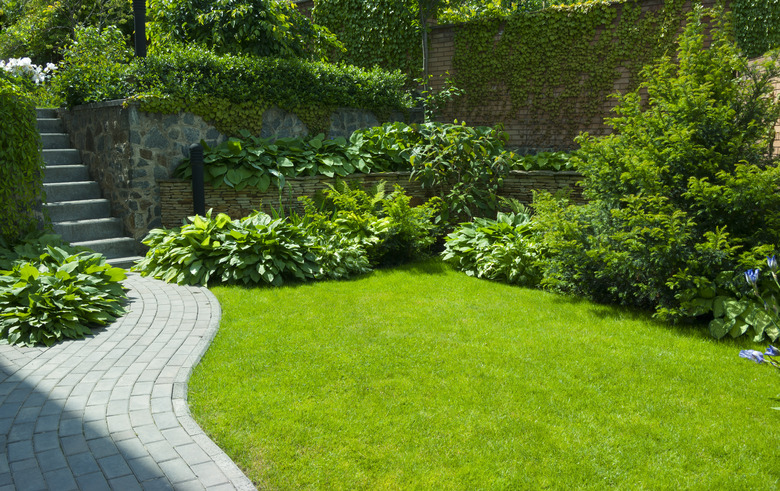How To Kill Grass With Bleach
We may receive a commission on purchases made from links.
Sometimes, the best way to deal with a problem lawn is to remove it, and while there are several more efficient ways, soaking the lawn with bleach is one way to do it. If you're planning on replanting, however, you'll be making a big mistake if you try to kill grass with bleach because the grass isn't all it will kill. It will seep into the soil and destroy all the worms, grubs and beneficial microbes that keep the soil and the grass healthy.
Bleach is fine if you want to kill unwanted grass growing in the cracks of a sidewalk or poking up through a gravel patio. Just be careful where you pour or spray it because it could injure or kill the other plants with which it comes in contact, so you wouldn't want to get it on your prize roses.
How Does Bleach Kill Grass?
How Does Bleach Kill Grass?
Household bleach is an aqueous solution of sodium hypochlorite and is the cleaner you need to make your clothes whiter and brighter, but people use it even more for disinfecting. They use it to clean and kill mold in the bathroom and kitchen, to clean toilets, to make tile grout whiter and to sanitize the swimming pool. It's a good disinfectant because it kills bacteria and other microbes, and it does this by disabling proteins that the microbes need to survive.
When you spray or pour bleach on the grass, it goes to work on all the beneficial microbes in the soil that help the roots draw in nutrients, and more importantly, it raises the pH of the soil extremely high, which also robs the grass of nutrients. The result is that the grass starves, and this usually occurs three or four days after you apply the bleach.
Using Bleach to Kill Grass
Using Bleach to Kill Grass
It can't be stressed enough that you should use bleach to kill grass only if you don't want to plant more grass or anything else in the places where you apply the bleach and with the understanding that you'll also be killing soil-dwelling organisms. With this understanding, a good way to make a grass-killing bleach solution is to mix it in a one-to-one solution with water, and if you want it to work quicker, use boiling water. Put the solution in a small bucket or a spray bottle. Put on a pair of rubber gloves and goggles and you're ready to use it.
To effectively kill the grass, you want the bleach to soak into the soil, so the best way to use your weed-killing solution is to pour it. If you use a sprayer, aim the nozzle at the ground and spray enough to make the solution soak in. To ensure the spray doesn't fly around the garden, keep the nozzle close to the ground and don't spray on a windy day. Also, make sure you don't get any on exposed skin and definitely not in your eyes.
Better Ways to Kill Grass
Better Ways to Kill Grass
Vinegar will also kill grass, and it's safer to use than bleach and easier on soil microbes, although you may have to apply it more than once to get results. If you're killing a lawn so you can remove it and plant a new one, though, it's better not to use chemicals at all. One of the best ways to kill a lawn is called solarization. You cover the lawn with plastic and wait several weeks, and when you remove the plastic and turn in the dead grass as compost, you have chemical-free, nutrient-rich soil for your new lawn. Generally, clear plastic is best, but if your landscape is in a cooler climate, black plastic may work better when left in place for several weeks during the hottest part of the summer.
